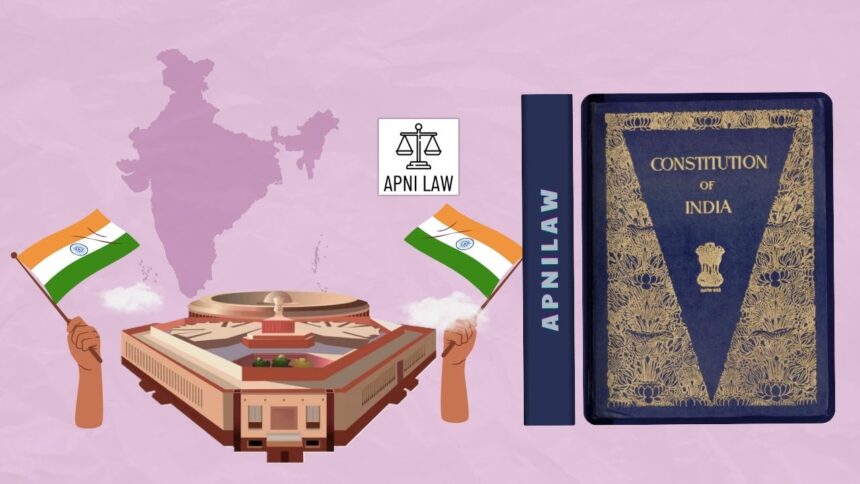Introduction
The 15th Finance Commission (FC-XV), chaired by N.K. Singh, played a crucial role in shaping India’s fiscal policy for the period 2021–2026. Set up under Article 280 of the Constitution, the Commission was tasked with recommending how tax revenues should be shared between the Union and the States and how resources should be distributed to ensure financial stability and equity. Its report addressed the country’s most pressing fiscal challenges, from managing pandemic-related disruptions to strengthening local governance and public health. The recommendations of the 15th Finance Commission remain central to understanding how India balances growth, equity, and responsibility across all levels of government.
Context and Background
The 15th Finance Commission submitted its first report for the year 2020–21 and its final report for 2021–26. This was a period marked by the COVID-19 pandemic, which drastically affected India’s economy and public finances. The Commission’s task became even more complex as it had to ensure that states retained enough financial freedom to meet local needs while maintaining national fiscal discipline.
The Commission analyzed the macroeconomic situation, fiscal indicators, and debt sustainability of both the Centre and the States. It also considered issues like demographic changes, urbanization, climate financing, and defense expenditure while framing its recommendations.
Vertical Devolution: Centre–State Share
The vertical devolution determines how the divisible pool of taxes is split between the Centre and all the States. The 15th Finance Commission recommended that 41% of the divisible pool of central taxes be shared with the States. This maintained the share recommended by the interim report but was slightly lower than the 42% share recommended by the 14th Commission.
The reduction was made to account for the newly created Union Territories of Jammu & Kashmir and Ladakh, which are now administered by the Centre. The Commission balanced the need for fiscal space at the central level with the commitment to cooperative federalism.
Horizontal Devolution: Distribution Among States
The horizontal devolution formula decides how the States share their collective 41% share among themselves. The Commission adopted a formula that included multiple indicators to ensure fairness and performance-based distribution. These included:
- Income distance (45%) – measuring how far each State’s income is from the highest per capita income.
- Population (15%) – based on the 2011 Census.
- Area (15%) – to account for geographical size.
- Forest and ecology (10%) – rewarding States with large forest cover.
- Demographic performance (12.5%) – incentivizing States that controlled population growth.
- Tax and fiscal effort (2.5%) – encouraging States to improve revenue collection.
This formula reflected a balance between equity, efficiency, and sustainability, ensuring that poorer and ecologically rich States received adequate support.
Local Bodies and Panchayati Raj Institutions
Recognizing the importance of grassroots governance, the 15th Finance Commission made significant allocations to local bodies. It recommended a total grant of ₹4.36 lakh crore for local governments over 2021–26.
Out of this, ₹2.36 lakh crore was earmarked for rural local bodies (Panchayats) and ₹1.21 lakh crore for urban local bodies. A portion of the grant was tied to sanitation, water supply, and air quality improvement, ensuring that local governments take responsibility for key public services. The Commission also emphasized the need for better auditing, transparency, and timely utilization of funds at the local level.
Disaster Management and Health Sector
The 15th Finance Commission placed great emphasis on disaster management and healthcare, recognizing their importance after the COVID-19 crisis. It recommended creating a National and State Disaster Risk Management Fund (SDRMF). It also advised allocating a portion of funds specifically for mitigation activities, not just relief and response.
For the health sector, the Commission suggested that government spending on health should increase to 2.5% of GDP by 2025. It also called for a stronger role for local bodies in delivering primary health services and managing epidemic responses.
Defense and Internal Security
A unique feature of the 15th Finance Commission was its focus on defense and internal security financing. It proposed the creation of a non-lapsable Modernisation Fund for Defence and Internal Security (MFDIS). This fund ensures that resources meant for modernization of the armed forces and police are not lost if unspent within a financial year. The Commission recommended that both the Centre and the States contribute to this fund to maintain long-term defense preparedness.
Fiscal Deficit and Debt Targets
To promote fiscal stability, the 15th Finance Commission recommended that both the Centre and the States follow a fiscal glide path. It proposed that the Centre’s fiscal deficit should gradually reduce to 4% of GDP by 2025–26, while States should aim for 3%, with limited flexibility.
The Commission emphasized fiscal transparency and accountability. It advised that any deviation from fiscal targets should be justified through a formal statement before Parliament or the State Legislature.
Grants-in-Aid and Sector-Specific Recommendations
The Commission recommended sector-specific grants-in-aid for areas like health, education, agriculture, judiciary, and statistics. For example, special grants were proposed to encourage higher education reforms, agricultural infrastructure, and judicial modernization.
It also provided performance-based incentives, rewarding States that meet targets related to power sector reforms, urban governance, and solid waste management. These targeted incentives aimed to make public finance outcomes more efficient and measurable.
Significance of the 15th Finance Commission
The 15th Finance Commission’s report marked a shift toward responsible fiscal federalism. It balanced competing priorities, ensuring that States had financial independence while keeping national stability intact. Its focus on local governance, health, defense, and environment demonstrated a holistic approach to national development.
Moreover, the inclusion of demographic performance and fiscal effort in the devolution formula encouraged States to improve population control and revenue management. In this way, the Commission made fiscal devolution more result-oriented than ever before.
FAQ Section
1. What was the major recommendation of the 15th Finance Commission?
The major recommendation was that 41% of the divisible tax pool be shared with the States for 2021–26, along with reforms to strengthen local governance and health infrastructure.
2. How did the 15th Finance Commission address defense and security needs?
It proposed a dedicated Modernisation Fund for Defence and Internal Security (MFDIS) to ensure consistent long-term funding for defense modernization.
3. Why did the Commission reduce the States’ share from 42% to 41%?
The reduction accounted for the exclusion of Jammu & Kashmir and Ladakh, which became Union Territories and are now financed directly by the Centre.
Conclusion
The 15th Finance Commission reaffirmed the spirit of cooperative and competitive federalism by ensuring equitable distribution of financial resources. Its recommendations addressed both short-term fiscal challenges and long-term developmental needs. By focusing on local bodies, disaster resilience, health, and defense, the Commission aligned financial governance with national priorities.
The report stands as a reminder that fiscal strength and democratic accountability must grow together. The success of its implementation will depend on how effectively both the Centre and the States cooperate to realize the vision of a balanced and inclusive India.







